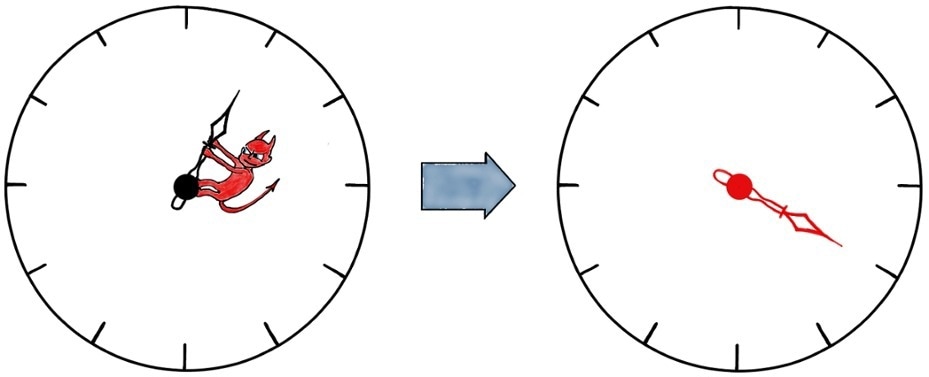As far as quantum computing is concerned, scientists Ludovico Lami (QuSoft and IoP, University of Amsterdam) and Mark M. Wilde (Cornell) have made considerable advancements.

Environmental noise, here represented as a little demon, can affect the state of a quantum computer by changing the phases of various branches of its wave function in an unpredictable fashion; we call this dephasing. Here, the position of the hand of the clock represents the phase of a particular branch of the wave function. Its modification, not known to us, will affect the delicate ballet of phase recombination which quantum computations rely on. Image Credit: L. Lami.
This is done by deriving a formula that helps anticipate the impacts of environmental noise. This is vital for designing and building quantum computers that have the potential to work in the defective world.
The Choreography of Quantum Computing
Quantum computing makes use of the principles of quantum mechanics to execute calculations. Contrary to classical computers, which make use of bits that could be either 0 or 1, quantum computers use quantum bits, otherwise called qubits, which could be in a superposition of 0 and 1 concurrently.
Compared to classical computers, this progress enables quantum computers to execute some types of calculations much faster. For instance, a quantum computer has the potential to factor very great numbers in a fraction of the time it would take a classical computer.
While it is possible for one to naively attribute such a benefit to the potential of a quantum computer to perform several calculations at the same time, the reality is highly complicated. The quantum computer’s quantum wave function (which constitutes its physical state) holds numerous branches, each with its phase. A phase could be thought of as the position of the hand of a clock, which could point in any direction on the clock face.
Eventually, in its computation, the quantum computer recombines the outcomes of all computations it concurrently performed on various branches of the wave function into a single answer.
The phases associated with the different branches play a key role in determining the outcome of this recombination process, not unlike how the timing of a ballerina’s steps play a key role in determining the success of a ballet performance.
Ludovico Lami, QuSoft and IoP, University of Amsterdam
Disruptive Environmental Noise
Environmental noise is regarded as a considerable hindrance to quantum computing. Such noise could be compared to a little demon that can change the phase of various branches of the wave function uncertainly.
This process of meddling with the phase of a quantum system is known as dephasing and could be hazardous to quantum computation success.
It is possible for dephasing to happen in everyday devices like optical fibers, which are utilized to shift data in the form of light. Light rays traveling via an optical fiber could take various paths; since each path is linked with a specific phase, not being much aware that the path taken amounts to an efficient dephasing noise.
In their new publication in the journal Nature Photonics, Lami and Wilde examine a model, known as the bosonic dephasing channel, to learn how noise impacts the transmission of quantum information. It signifies the dephasing acting on a single mode of light at definite polarization and wavelength.
Quantum capacity is defined as the number measuring the effect of the noise on quantum information, which is also the number of qubits that could be transmitted safely per use of a fiber. The new publication offers a complete analytical solution to the issue of evaluating the quantum capacity of the bosonic dephasing channel, for each possible form of dephasing noise.
Longer Messages Overcome Errors
For the effects of noise to be surpassed, one could include redundancy in the message to guarantee that the quantum information could still be recovered at the receiving end. This is alike to saying “Alpha, Beta, Charlie” rather than “A, B, C” when speaking on the phone. Even though the transmitted message is prolonged, the redundancy guarantees that it is properly understood.
To protect the quantum messages from the dephasing noise, the new study exactly measures how much redundancy is required to be added to it. This is considerable since it allows researchers to measure the effects of noise on quantum computing and develop techniques that help to overcome such effects.
Journal Reference:
Lami, L & Wilde, M M (2023) Exact solution for the quantum and private capacities of bosonic dephasing channels. Nature Photonics. https://doi.org/10.1038/s41566-023-01190-4.